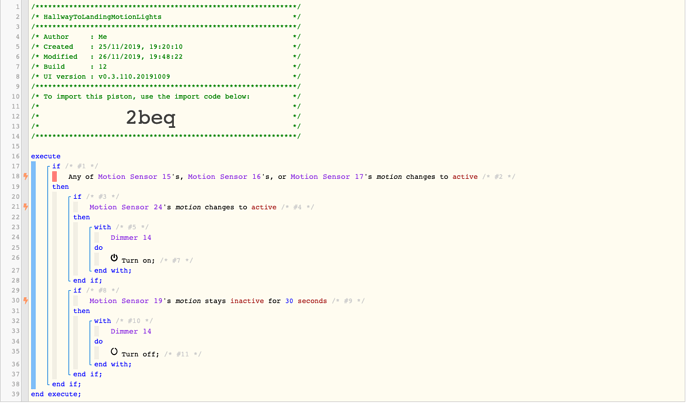Hi All,
Im trying to get a motion sensor piston to work. The use case is that I want to use motion sensors to turn lights on. I want to be able to distinguish between someone walking from upstairs to downstairs and vice vera. For example (see piston below), If motion is detected on MS1 or MS2 and then MS3, turn on this light switch. The idea being, I would do the same for the reverse journey. Am I doing something wrong, it doesnt seem to trigger correctly. Its been a while since I have used Webcore so the conditions might not be right


